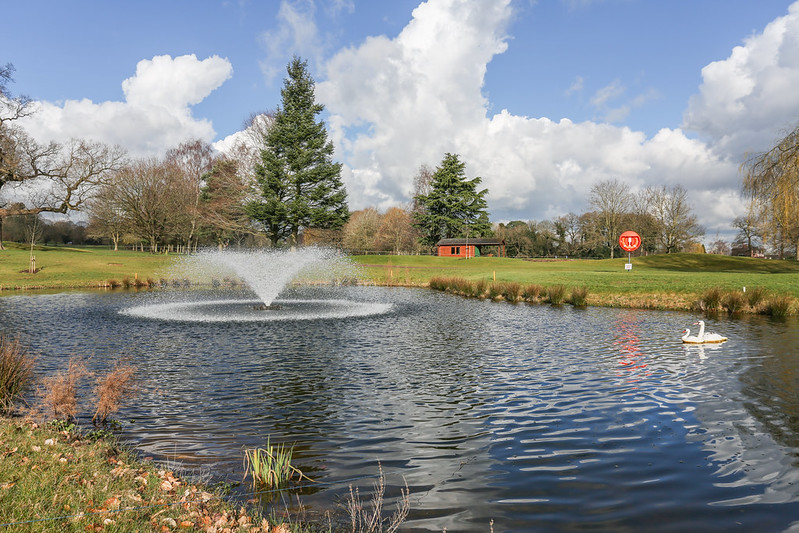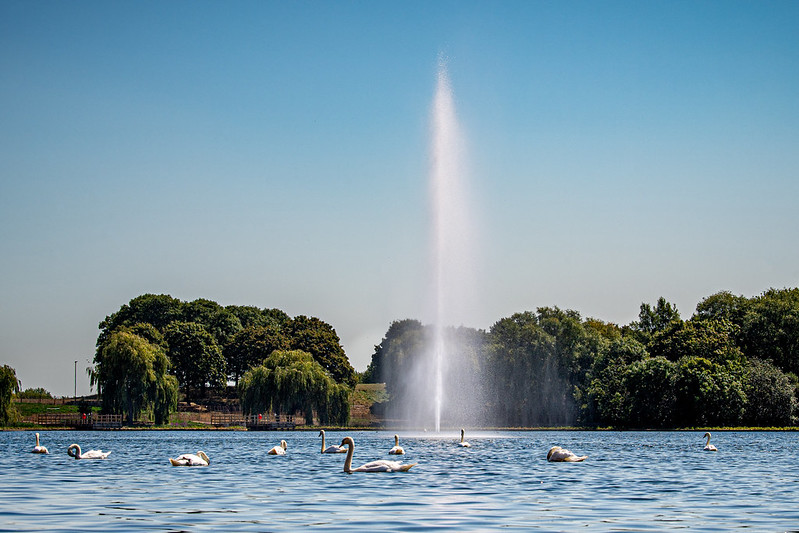How to aerate a lake naturally
Pond aeration 101
In nature, ponds and lakes are aerated by streams and rivers that flow into them and by the weather particularly wind and heavy rain. Man-made ponds however need a little help to stay properly oxygenated. But there’s no reason why that aeration solution can’t be as natural as possible.
Pond and lake aeration
Any pond that doesn’t have adequate aeration will inevitably have problems. The types of problems a poorly managed pond will experience are unchecked plant, weed and algae growth, unpleasant smells and fish waste.
If you want to add oxygen to water, all you need to do is keep the water moving or continuously disrupt it. The more disruption the water’s surface gets, the more oxygen it gets.
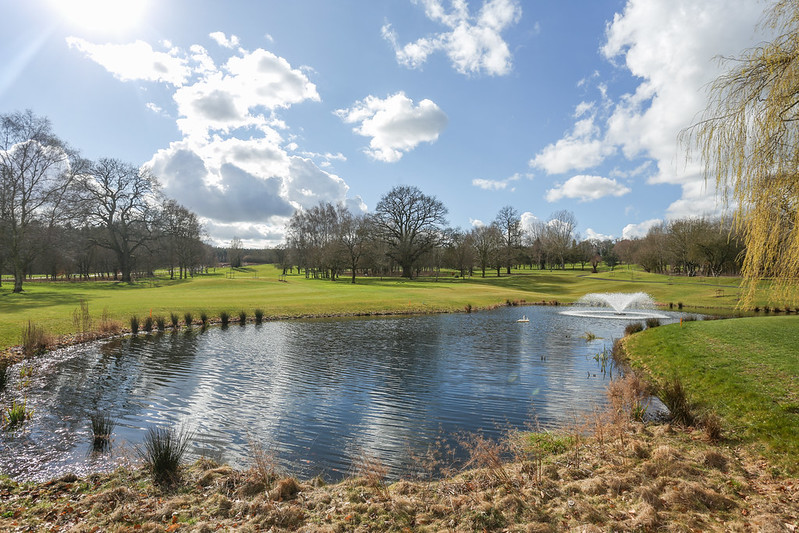
What is water aeration?
Pond aeration is the introduction, circulation, mixing and increasing of oxygen into the entire water column. It involves the natural or mechanical movement of water that breaks the pond’s surface layer to bring the water into contact with the air. Increased air contact results in higher and more consistent levels of oxygen in the water – a key component of a healthy aquatic ecosystem.
What happens in a poorly aerated pond or lake?
Bodies of water that are not properly circulated naturally stratify into layers based on temperature, oxygen level and density. This is when the water column separates into a layer of warm, oxygen-rich water at the surface, a dividing layer, and cold, oxygen-poor water near the bottom.
Without proper aeration, aerobic bacteria on the pond floor do not receive the necessary oxygen to break down organic material that falls from the warmer, oxygen-rich layers above. This results in thick deposits of muck – essentially rotting organic material – rich in nutrients which can lead to the unchecked growth of algae, and negatively impact water clarity and the overall aesthetic value of the pond. Unchecked over time, increased levels of muck lead to pond eutrophication which is the slow death of the water body.
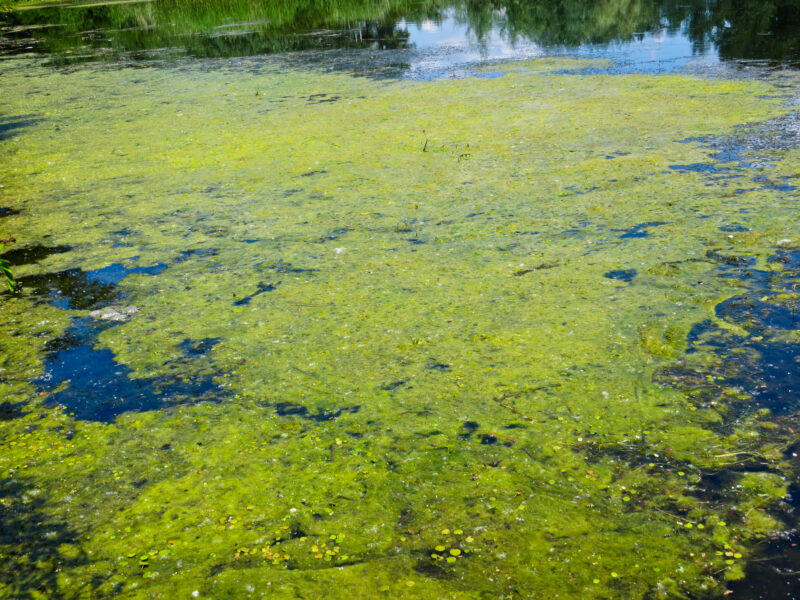
Poorly aerated water will soon be overwhelmed with algae.
Plant power
Adding plants to water is the primary, nature-echoing, power-free method for adding oxygen. They release oxygen through photosynthesis while removing excess nutrients. The extra oxygen will improve the efficiency of filtration, as healthy bacteria colonise quicker and break down the harmful waste.
It’s important to choose plants to suit the size, depth and style of the pond. Ideally, half of the surface area should be covered and choosing the right plants for the depth of water is key.
Some water plants and marginals are vigorous, spreading via roots or self-seeding. These can be useful in large ponds and lakes, but small ponds need more restrained choices, otherwise controlling them will be an issue. Make sure to check the plant’s eventual size before buying, be prepared to keep it under control and quarantine new purchases for a few weeks before planting.
Ballpark, you will need between three and eight plant bunches per 1000 litres to provide adequate oxygen.
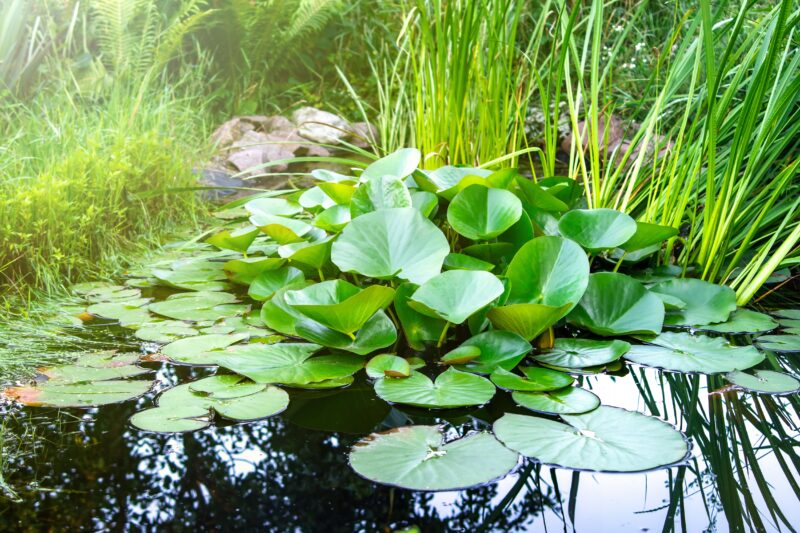
The key to a healthy pond ecosystem
With increased circulation and contact with air, it’s possible to turn a stagnant body of water into a thriving, healthy system once again and it’s easy to aerate a pond of any size.
Don’t worry that adding aeration to the system will change the ecosystem of the pond. Aeration is a natural part of every pond, even if it’s produced with an electric-powered compressor.
A properly designed and installed aeration system will greatly slow down the eutrophication process, help prevent summer and winter temperature fluctuations and prolong the life of the pond to ultimately improve water quality.
Electric power
The next best thing to aerating a lake naturally with plants, and, we might add, a lot less time-consuming and far easier a choice, is with mechanical circulators and aerating fountains.
These can de-stratify the pond layers and increase oxygen levels in the entire water column. Oxygen promotes aerobic (active) consumption of excess nutrients that can cause excessive algae, which rapidly and dramatically decreases water quality.
The easiest way to achieve proper pond aeration and oxygenation is to install an aerating fountain, circulator or diffuser.
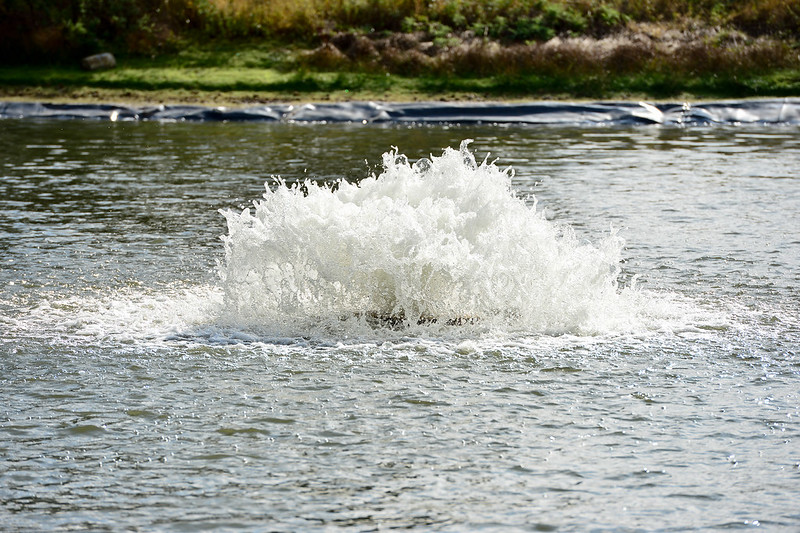
What is the difference between an aerator and fountain?
An aerator adds oxygen and induces circulation into the pond or lake for water quality management purposes and is also known as subsurface aeration, while a fountain is designed to throw water into the air to create an attractive pattern and is otherwise known as surface aeration. In other words, aerators pump high volumes of water at low pressure, while fountains pump low volumes of water at low pressure.
Aerating fountains
These use an electric motor and turbine assembly to pull cooler water from the pond bottom and push it to the surface. As a fountain in a decorative pattern, they combine practical, science-based technology of water aeration with the aesthetically pleasing benefits of a water display. Best used in shallow ponds, one of their big benefits is that they require as little as 30 inches/76cm of water to operate.
Circulators
- Aspirators transfer oxygen from the surface into the water column through a venturi tube, creating no surface spray.
- High-volume aerators pump large amounts of water above the surface. These are most typically used in severe and industrial environments, such as wastewater ponds.
- Mixers circulate water horizontally to break up stagnant or stratified water.
Diffusers
Diffusers act as underwater ‘bubblers’, aerating, destratifying and circulating water without disturbing the natural surroundings.
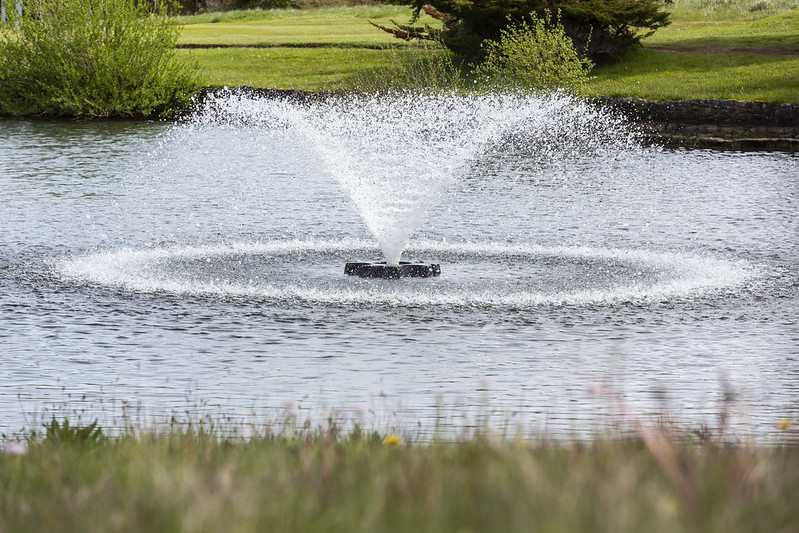

Otterbine aerating fountain (left), Otterbine underwater diffuser (right)
Why Otterbine?
Otterbine has 72 years of experience developing and supplying innovative water quality management products and now provides:
- The highest oxygen transfer and pumping rates in the industry – independent testing by the University of Minnesota and GSEE proves it
- They’re manufactured with 316 marine-grade stainless steel – one of the highest on the market – making them corrosion resistant
- Some of the lowest operating costs in the industry with systems operating 34 percent more efficiently than other aerator and fountain type products
- With an average lifespan of over 15 years and backed by an all-inclusive four-year warranty, they’re built to last.
System sizing and selection
There are four factors that determine the site’s requirements: surface area, depth, quality of incoming water and available power. When it comes to the product, you’ll need to decide if surface or subsurface is best, and depending on the size and shapes you may have to consider breaking horsepower requirements into smaller units and spaces throughout the water feature. But as a rule, 2HP per surface acre hits the sweet spot.
For help correctly sizing your pond or lake for the best possible fountain or aeration system, Otterbine has a helpful calculator here.
It’s time to start breathing life back into your water naturally with Otterbine.
